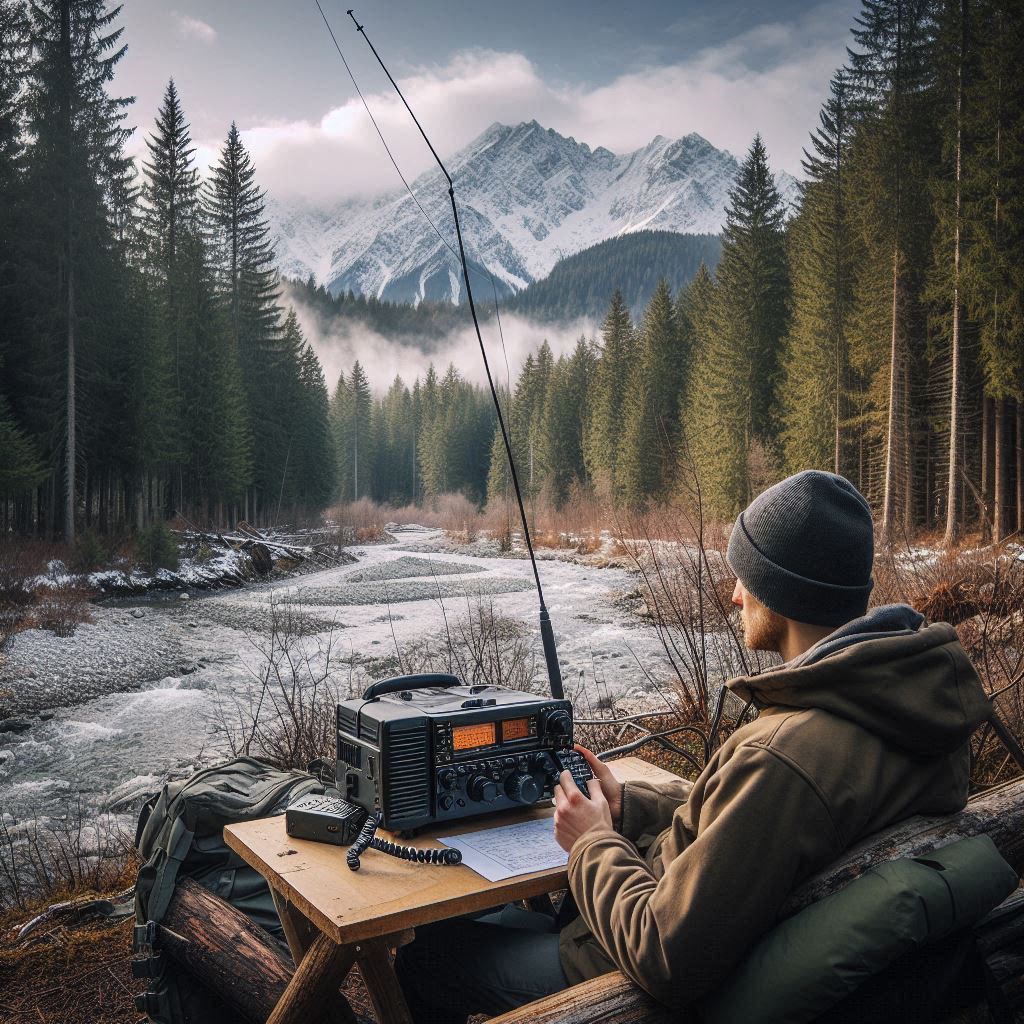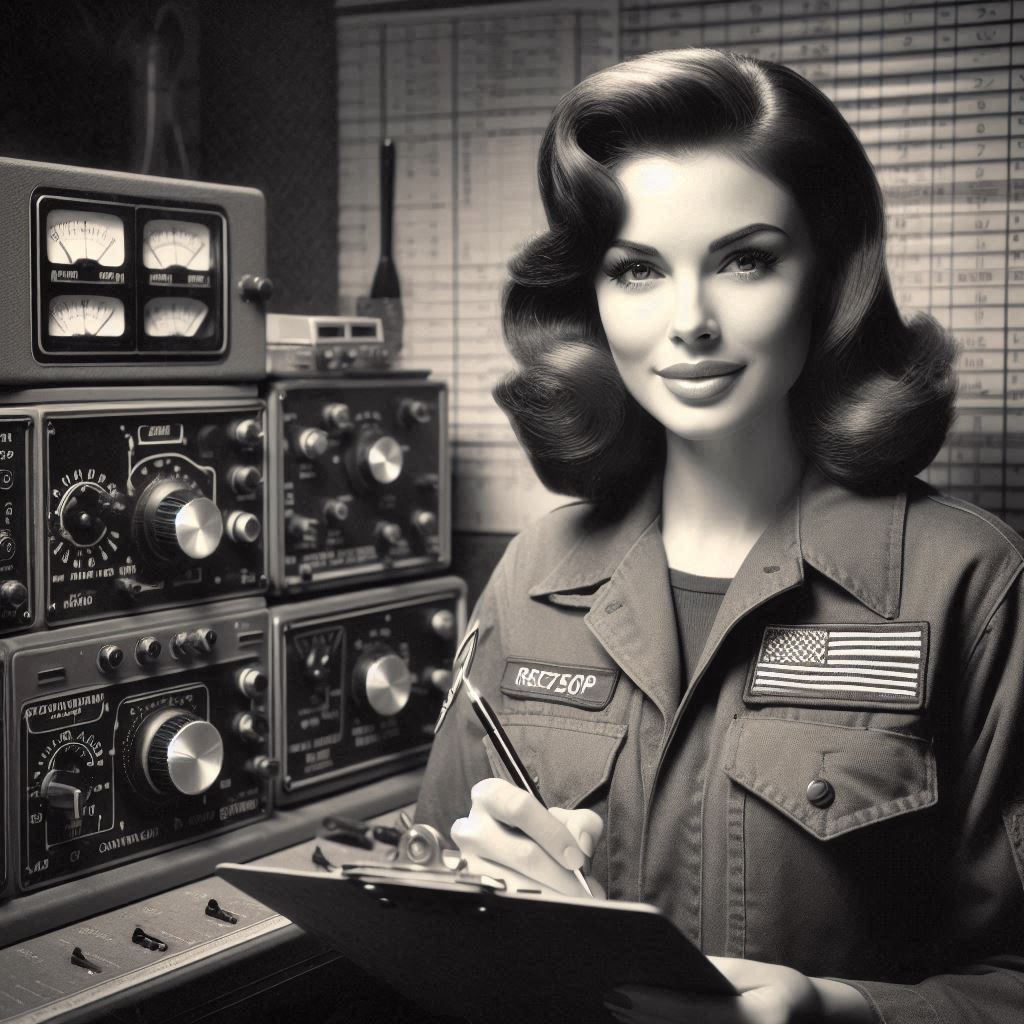QRP Operators: How to Turn Space Weather Into Your Secret Weapon
Why 5 watts and smart timing beats 100 watts and bad timing every time
Most QRP operators think space weather is their enemy. Solar flares knock out bands, geomagnetic storms create noise, and those big gun stations seem unaffected while your 5-watt signal disappears into the chaos. You’re looking at this completely backwards.
Space weather isn’t your enemy—it’s your secret weapon. While high-power operators muscle through poor conditions with brute force, smart QRP operators use space weather intelligence to find the exact moments when physics works in their favor. When you know the science, 5 watts at the right time consistently outperforms 100 watts at the wrong time.
The Two Golden Windows Every QRP Operator Must Know
Experienced QRP operators have long recognized two critical propagation windows that give low-power stations a decisive advantage. Most hams miss these completely because they shut down their rigs at exactly the wrong times.
Golden Window #1: The Post-Flare Enhanced Propagation Period
When a solar flare erupts, your first instinct is probably to QRT and wait it out. Don’t. Here’s what actually happens:
Minutes 0-30: The Chaos Phase
- Type III bursts sweep across your receiver
- Buzzing sounds and sudden signal fading
- Most operators shut down in frustration
Minutes 30-40: The Golden Window
- X-rays from the flare provide extra ionization to the E/F layers
- Improved reflectivity creates better signal-to-noise ratios
- Higher Maximum Usable Frequency (MUF) opens bands that were closed
- Enhanced propagation continues until sundown
The QRP Advantage: While big stations barely notice the improved signal-to-noise ratio, your 5-watt signal suddenly punches through like 50 watts. The enhanced ionization acts as a natural amplifier for weak signals.
This is why contest-savvy QRP operators monitor solar flare alerts religiously. They know that 30 minutes after chaos begins, opportunity starts.
Golden Window #2: Post-Storm Recovery Magic
When a major geomagnetic storm finally subsides (typically 12-24 hours after onset), something remarkable happens that most operators never experience because they’re still avoiding the bands.
The Physics: As the storm ends, Earth’s magnetic field often becomes very quiet, producing extremely low noise levels on HF—particularly on 40 and 80 meters during nighttime.
The Opportunity: Ultra-quiet band conditions mean your QRP signal has virtually no competition from atmospheric noise. It’s like having the entire spectrum to yourself.
This second window is where QRP operators often log their most memorable DX contacts. The combination of low noise and recovering propagation creates ideal conditions for weak signal work.
The Solar Cycle Advantage: Why QRP Shines When Others Struggle
Here’s where QRP operators have a massive strategic advantage that most don’t recognize: the lower bands are always open.
Unlike the higher frequencies that depend heavily on solar activity, 40 and 80 meters remain consistently available regardless of where we are in the 11-year solar cycle. The Maximum Usable Frequency rarely drops below 10 MHz, making these bands your reliable workhorses.
What this means for QRP:
- 40 and 80 meters remain reliable during solar minimum when 10-20m close
- High-power operators chase the fickle higher bands during poor solar conditions
- Smart QRP operators own the stable lower frequencies with minimal competition
Contest Operations: The QRP Timing Strategy
For contest operators running QRP, space weather knowledge transforms your entire strategy. Instead of competing head-to-head with big guns during normal conditions, you time your serious operating around space weather events.
The QRP Contest Playbook:
Phase 1: Monitor for Flare Activity
- Watch space weather alerts for M-class or X-class solar flares
- Don’t QRT when the chaos starts—prepare for opportunity
Phase 2: Exploit the Post-Flare Window
- As soon as the Type III bursts stop (typically 30 minutes)
- Push the higher bands aggressively while MUF is enhanced
- Work weak DX that normally wouldn’t hear your signal
Phase 3: Storm Recovery Operations
- Monitor for geomagnetic storm subsidence using real-time indices
- Focus on 40/80M during the ultra-quiet recovery period
- Own the low bands while big stations struggle on higher frequencies
The 30-Meter Secret Weapon
Thirty meters occupies a unique position in the amateur spectrum—it’s often unaffected by the same solar disturbances that wreak havoc on other bands. Whether solar flux is high or low, whether geomagnetic conditions are quiet or disturbed, 30 meters often provides reliable propagation.
For QRP operators, this is pure gold:
- Reliable propagation regardless of solar conditions
- Less crowded than 40 meters
- CW and digital modes perfect for weak signal work
- Often ignored by casual operators during space weather events
Many experienced QRP operators consider 30 meters their “ace in the hole” during uncertain space weather conditions.
Real-World Application: Reading the Signs
Modern space weather monitoring gives QRP operators unprecedented tactical intelligence. Instead of guessing, you can predict exactly when conditions favor weak signals.
Green Light Conditions (Time to Push Hard):
- HP30 or K-index recovering from high values
- Solar flux elevated from recent flare activity
- Interplanetary magnetic field turning northward
- Declining A-index indicating settling conditions
Red Light Conditions (Stick to Known Reliable Paths):
- Rapidly rising geomagnetic indices indicating storm onset
- Strong southward magnetic field indicating energy coupling
- Multiple days of sustained high activity
The Psychological Advantage
Perhaps the biggest advantage isn’t technical—it’s psychological. When you understand space weather, you operate with confidence instead of fear. You know when to push hard and when to wait. You time your serious operating around natural advantages instead of fighting physics.
Most importantly, you stop making excuses about “poor conditions” and start making contacts during conditions others consider impossible.
Smart QRP operators have learned that the best DX often happens when everyone else thinks conditions are terrible.
Advanced Techniques: The HP30 Advantage
While most amateur radio sites still rely on 3-hour K-index updates, cutting-edge QRP operators are discovering the advantages of 30-minute resolution geomagnetic data through indices like HP30.
Why 30-minute resolution matters for QRP:
- Catches rapid changes that 3-hour averages miss
- Identifies brief quiet periods during active conditions
- Provides early warning of deteriorating conditions
- Reveals recovery phases other operators miss entirely
This high-resolution data is like having a microscope instead of a magnifying glass—you see opportunities that others completely miss.
Bottom Line: Physics Beats Power
The fundamental truth of QRP is that timing and technique matter more than transmitter power. Space weather gives you the timing intelligence to make your 5 watts work like 50 watts at exactly the right moments.
While high-power stations brute-force their way through average conditions, smart QRP operators wait for physics to provide natural amplification. When you combine low power with high intelligence, you don’t just compete with the big guns—you often outperform them.
The next time you see a solar flare alert or geomagnetic storm warning, don’t reach for the power switch. Reach for your key and get ready to work some amazing DX that others will miss completely.
The sun is your amplifier—you just need to know when to use it.
Want real-time space weather intelligence optimized for amateur radio operations? Monitor current conditions and get band-specific recommendations at SolarCdx.com. Turn space weather from your enemy into your secret weapon.
73,
W2ADX

